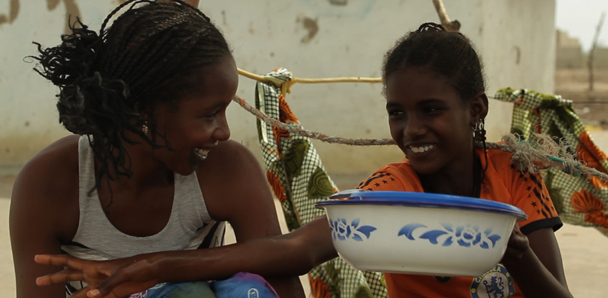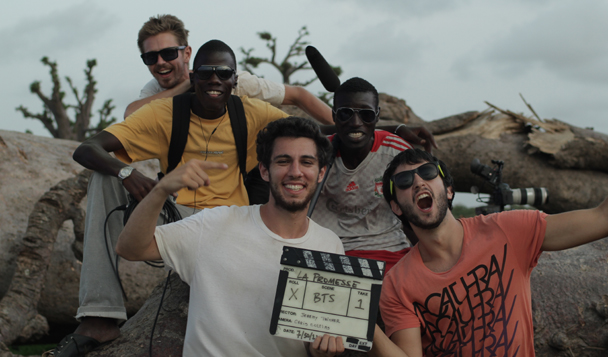
Into Africa: The Making of Baobab

As a relatively inexperienced director at age 23, I certainly recognized that it was borderline insanity to shoot my first feature film in a rural African village miles away from the nearest paved road. But I had no choice: out in the village of Sinthiou Mbadane, Senegal, I had landed myself in the middle of a cultural revolution.
The resulting film, Tall As The Baobab Tree, is screening in the BFI London Film Festival on October 14th and 18th. Inspired by true stories from my Student Academy Award-nominated documentary, the film tells the story a teenage girl in a rural African village who hatches a secret plan to rescue her 11-year-old sister from an arranged marriage and put her into school. Tickets and detailed information on the BFI website.
Through this story that blends fiction with reality, Tall As The Baobab Tree captures the essence of a small village’s real-life cultural transformation as access to formal education for the first time in history brings centuries-old tradition into conflict with modern society.
We shot on location in the village of Sinthiou Mbadane, and we cast local villagers – who had never acted before – in roles that mirrored their actual lives. Their performances tell a story that captures a unique moment in time as their village struggles to adapt its traditional culture to a modern world with a fundamentally different set of rules.
So how did I end up shooting my first feature film in rural Africa?
I first travelled to the village of Sinthiou Mbadane in the fall of 2008 on a semester abroad through my university. The village was accessible only by horse cart, traversing across dirt paths through open fields populated by herds of cows and gigantic baobab trees. I quickly learned that village life was in the midst of a transformation: a school had recently been built, and formal education was accessible for the first time in history. Village parents now had a choice: to either send their children to this new school, or to follow the centuries-old tradition of sending sons to work in the fields and sending daughters to get married.

I befriended a group of local teenagers—they were the first group of villagers to attend the new school, and many of them weren’t much younger than me. They explained how their elders struggled with the idea of formal education, simultaneously embracing of the potential it offered the village, but wary of the threat it posed to their culture. The more we spoke, the more they revealed their conflicting feelings between their loyalty to their families and their hopes for their futures. Would they have to turn their backs on their culture in order to enter the modern world?
Immediately after graduating University, I returned to Senegal to make a documentary with the teenagers—but I knew that to truly do justice to the complex emotions behind the village’s cultural change, only a narrative feature would suffice.
In telling this story, my goal is to bring the audience into the village and enable them witness this cultural transformation first-hand. Our story is simple and our characters are pure and heartfelt—I didn’t want to rely on a flashy narrative or sensationalist imagery to draw people in. Instead, my intention is for Tall As The Baobab Tree to be an honest experience that challenges the audience to draw their own conclusions. I invite everyone to join me at the screenings on the 14th and 18th for a Q&A!







COMMENTS